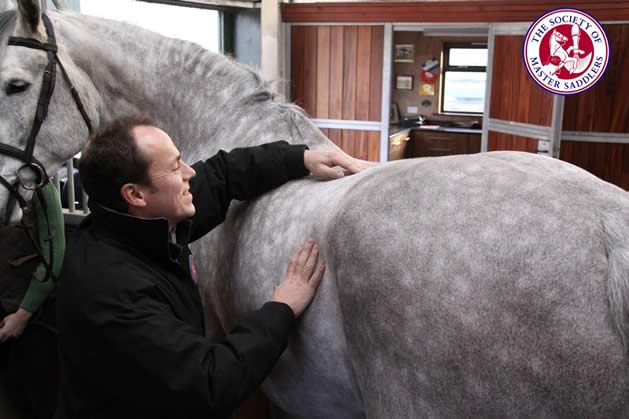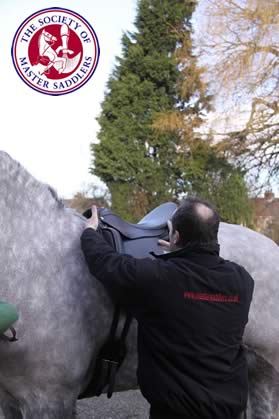
Horseytalk.net Special Interview
Hazel Morley
Hazel Morley of the Society of Master Saddlers
answers YOUR QUESTIONS ABOUT RE-FLOCKING.

Question:
My horse is quite prone to losing weight, which means my saddle needs re-flocking regularly.
Are there any simple checks I can do between saddler's visits to know whether the saddle fit is OK, or needs looking at urgently?
Says Hazel Morley of the Society of Master Saddlers
Keeping a close eye on your horse's condition is very important throughout the year and it is great that you already have regular visits from your registered qualified saddle fitter.
There are a number of ways to check for saddle fitting issues in between those visits which are simple and easy to undertake during seasonal changes in your horse's weight.
It is very important to make sure the saddle doesn't pinch your horse if he puts on weight or sits too low on the withers due to weight loss.
Simply by running your hand under the saddle you can quickly learn what to feel and this will give you an idea if you need to call out your Society of Master Saddlers' Registered Qualified Saddle Fitter before the date you have booked in your diary.
When it comes to simple checks these are best carried out both visually and by feel. Putting your fingers between the pommel and the horse will give you a rough guide to if the saddle has dropped and is pinching the withers. A saddle that sits too high on the withers will be unstable and it will be 'obviously' visible that there is too much height between the withers and the pommel.
Anyone who is unsure whether their saddle fits correctly should immediately consult a Society of Master Saddlers' Registered Qualified Saddle Fitter.
It could mean a visit every three months in cases where the horse is prone to losing or increasing weight rapidly whether just moving into the summer or leaving the winter.
Top Five Tips
1 – Check your saddle regularly rather than leaving it too late when damage can be caused.
2 – The amount of space needed between the horse and the pommel of the saddle is 'sufficient clearance'. The amount of space changes depending on the type of horse for example a wide flat backed horse will have much less clearance than a narrow high withered horse. As long as there is clearance throughout the length of the saddle at all times then this is 'sufficient'.
3 – Regarding feeling under the saddle, this is done to check the pressure is even throughout the underside of the saddle so you should be feeling an even pressure on your hand. If your hand is squeezed more in one place than another then there is more pressure in that place. It is important to do this both with and without the rider on board.
4 – When organising their visit try to remember how your horse changes shape each year from season to season and when these are at their most extreme.
5 – Consult the Society of Master Saddlers if you require more information - 01449 711642.
Finding a Saddle Fitter
To find your nearest Society of Master Saddlers' Registered Qualified Saddle Fitter the first point of call is a visit to their website –www.mastersaddlers.co.uk
Click on the Qualified Saddle Fitter tab down the left hand side and this will take you to their online database in order for you to locate saddle fitters in your region.



